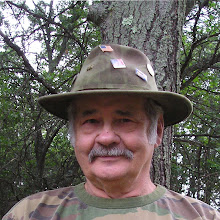The difference between the passenger pigeon and the bison is that when mankind realized that there were less and less animals every year, they did something about it. With the pigeon, there was no such realization. This probably has to do with the size of the creature and its habits. The bison was protected and we will always have them with us. There will never be the great herds again as the space for those herds to roam is gone. Considering today's population, the bison would probably have been pushed into a corner and the herd cut back anyway. I cover this aspect of environmentalism more thoroughly in the chapter on population. You could say that the bison have been replaced by cattle. I know that it is not the same, but they do provide a lot of food and a lot of clothing (leather) for a lot of people, just as the bison did. As for it not being the same, that is what evolution is; change. For those who believe in evolution, this has to be totally natural. I am glad that some of today's pseudo-environmentalists were not around during the age of the dinosaur. I do not think I would enjoy spending my time hiding from or ducking dinosaurs or mastodons.
Now, let us take a look at mankind and see how the picture changes. Were some of the first homo sapiens to return to earth today they would think they were on the wrong planet. They would not recognize the plants, the animals, the landscape and perhaps not mankind itself. That is how much everything has changed (evolved) over the many years that homo sapiens have called this planet home. Many of the changes in that time period have either been caused or helped by mankind. While every species evolves within its own kind, I do not believe that one species can turn into a different species as do evolutionists. Some of the changes made by humans have been on purpose and some have been done unwittingly. The fact is, humans have been changing the face of the earth since they have been on this earth.
While animals do things by instinct, humans are a reasoning creature. Animals do not have wants and desires, only needs, while humans have wants and desires. Animals concerns are few; food, safety, sleep, warmth and reproduction. All of these needs are filled by instinct, gained over many years or possibly centuries. Not that animals cannot learn, they can. For instance, many years ago deer did not look up into trees for danger. They had no predators that attacked them from above. then humans started using tree stands from which to hunt. Now deer in hunted areas pay attention to things above them. They will probably not lose this trait unless they go many years without being hunted from tree stands. This is instinctive reaction, when danger comes from one area long enough, that becomes an ingrained part of the animals brain. Humans do not live by instinct. Yes, we do have some remnants of the old instinctive ancestors, like when the hair stands up on the nape of your neck under a dangerous situation or when you can "feel" someone looking at you. These traits are probably left over from the time when homo sapiens lived in caves and were hunted by large carnivorous beasts. Once the dangers were gone, these instincts faded, some of them completely. By and large humans are not instinctive creatures. We have a fairly large highly developed brain which allows us to process information, make decisions, plan, make and use tools and most important; reason things through. this is what makes humans different than, say, beavers. While the beaver is a very intelligent animal and a great engineer, building dams and houses, they do all of this by instinct. They have been doing this for thousands of years and it is always the same. Watching a colony of beaver build a dam or a house is a wonderful sight. There are a lot of interesting things going on during their construction. However, after watching several colonies doing their building you come to realize that everything is instinctive. Consider the location of the dam; it is all based on the availability of food and building materials, which are sometimes the same. The beaver does not look around to try to find a spot that would facilitate a dam with far less work. They do not check for water depth, speed of flow or anything else. Find food, build dam that is their instinct. Humans on the other hand would check out the stream for many of these things and maybe more before deciding where to build the dam. When the beaver builds the dam, there are no shortcuts, no better methods, no new materials, no new tools or anything else different that you would just normally expect from humans. that is the difference between instinctive engineering and sane, rationally thought out engineering.
I will finish this chapter next entry, until then;
